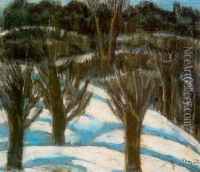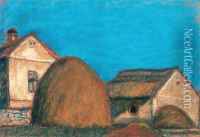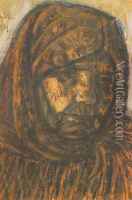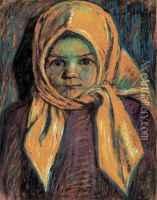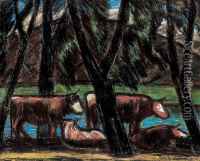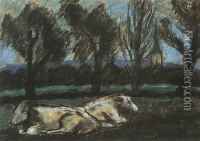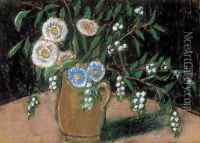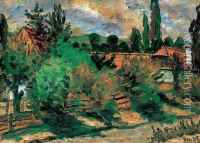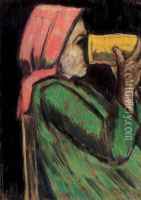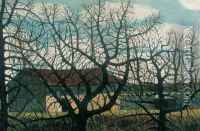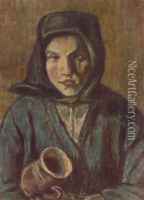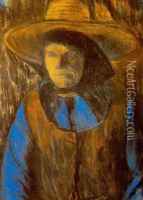Istvan Nagy Paintings
István Nagy was a Hungarian painter, born in Balmazújváros, Hungary, on November 23, 1873. He is recognized for his work as a genre painter and for his depictions of rural life in Hungary. Nagy's artistic journey began at the Mintarajziskola, the School of Decorative Arts in Budapest, where he studied under the guidance of Gyula Benczúr, a notable Hungarian painter of historical themes.
After his initial education in Budapest, Nagy further developed his skills in Munich, Germany, which was a hub for artists during that time. He then continued his studies in Paris, France, where he was influenced by the works of the Barbizon school and the French realists. These experiences helped shape his style, which often focused on the simple and everyday aspects of peasant life, imbued with a sense of romanticism and national pride.
Nagy's works are characterized by their sensitive portrayal of light and atmosphere, with a particular attention to the effects of sunlight. He often depicted the Hungarian plains, its people, and their customs, capturing the spirit of his homeland through a naturalistic and realist approach. His paintings often featured peasants, landscapes, and scenes from daily life, rendered with a warm palette and a sympathetic eye.
Throughout his career, Nagy exhibited his work in various salons and exhibitions in Hungary and abroad, gaining recognition and awards for his contributions to Hungarian art. Notably, in 1906, he received the Hungarian State's Grand Prize for his painting 'After the Wedding'. Some of his works have been acquired by major museums in Hungary, including the Hungarian National Gallery.
István Nagy's commitment to portraying the rural life of Hungary with authenticity and emotional depth won him a special place in the hearts of the Hungarian people. He passed away on September 11, 1937, in Budapest, leaving behind a rich legacy in the form of his evocative paintings that continue to celebrate Hungarian culture and heritage.

